The March 2015 Retail Sales report shows retail sales increased 0.9% for the month as auto sales had a major comeback increase of 2.8%. Without autos & parts sales, March retail sales increased 0.4%. Gasoline sales declined by -0.6%. Building materials had a good month with a 2.1% sales increase. Retail sales have now increased 1.3% from a year ago. Retail sales are reported by dollars, not by volume with price changes removed. Retail trade sales are retail sales minus food and beverage services and these sales also increased 0.9% for the month. Retail trade sales includes gas.
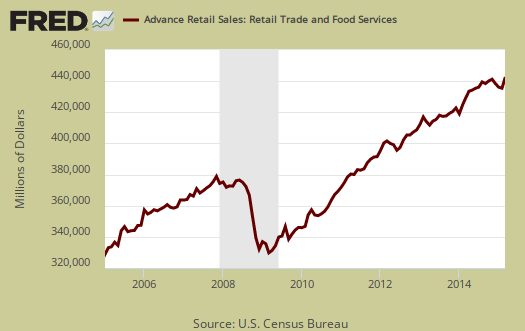
Total March retail sales were $441.4 billion. Below are the retail sales categories monthly percentage changes. These numbers are seasonally adjusted. General Merchandise includes Walmart, super centers, Costco and so on. Furniture had a good month as did clothing. Department stores by themselves saw a 1.4% monthly sales increase.
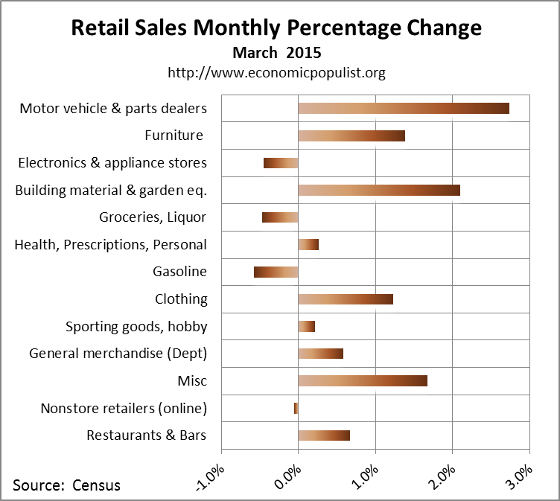
Below is a graph of just auto sales. Auto sales and parts had a come back, overall a 2.7% increase for the month and for autos alone, 2.8%. For the year, motor vehicle sales have increased 5.8%. Autos & parts together have increased 5.2%
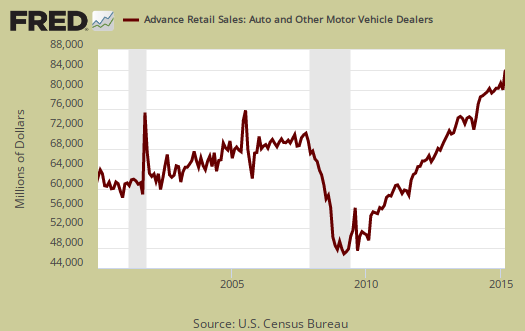
Below are the retail sales categories by dollar amounts. As we can see, autos are by far the largest amount of retail sales. Autos and parts is more than groceries and almost rivals groceries, booze and eating out combined.
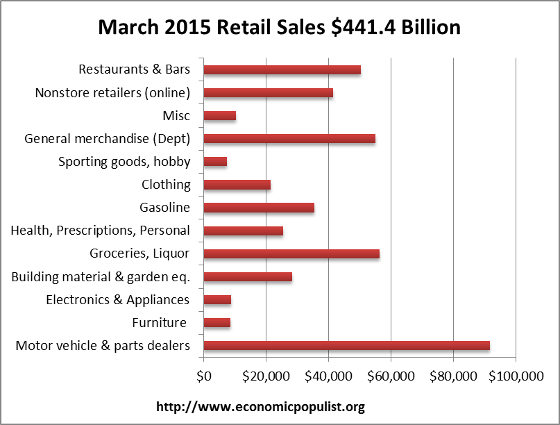
Graphed below are weekly regular gasoline prices, so one can see what happened to gas prices in March. Gasoline station sales are down a whopping -22.0% from a year ago. Gas prices are projected to be the lowest since 2009 for that summer roadtrip.
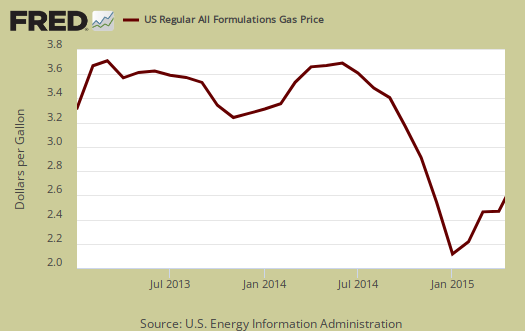
The below pie chart breaks down the monthly seasonally adjusted retail sales by category as a percentage of total March sales by dollar amounts. One can see how dependent monthly retail sales are on auto sales by this pie chart. America is a Car nation while prices soar through the stratosphere once again.
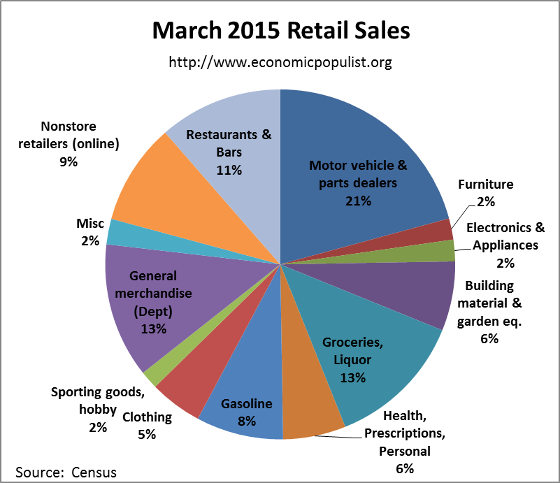
Retail sales correlates to personal consumption, which in turn is about 70% of GDP growth. Yet GDP has inflation removed from it's numbers. This is why Wall Street jumps on these retail sales figures. Below is the graph of retail sales in real dollars, or adjusted for inflation, so one gets a sense of volume versus price increases. Below is the annualized monthly percentage change in real retail sales, monthly, up to February 2015. This is a crude estimate since CPI is used instead of individual category inflation indexes. The below graph can give some insight as to what consumer spending might shape up to be for Q1 2015.

Below is a graph of real PCE against real retail sales, quarterly, up to Q4 2014. See how closely the two track each other? PCE almost looks like a low pass filter, an averaging, removal of "spikes", of real retail sales. Here are our overviews for PCE. Here are our overviews of GDP.
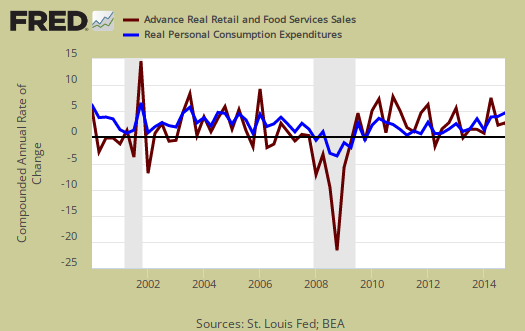
Retail sales are not adjusted for price increases, not reported in real dollars. Real economic growth adjusts for inflation. Retail sales has variance, margins of error, and is often revised as more raw data comes into the U.S. Department of Commerce (Census division). For example, this report has an error margin of ±0.5%. Data is reported via surveys, and is net revenues of retail stores, outlets. Online retail net revenues are asked in a separate survey of large retail companies (big box marts). This is also the advanced report. To keep the monthly nominal percentage changes in perspective, below is the graph of monthly percentage changes of retail sales since 2008.

For the three month moving average, from January to March in comparison to the October through December average, retail sales have decreased by -1.3%. The retail sales three month moving average in comparison to a year ago is up 2.2%. Overall as shown the below graph of quarterly annualized retail sales percentage change, up to Q1 2015. Adjusted for prices and inflation is what matters for economic growth yet such a large, annualized, nominal quarterly decline does not bode well.
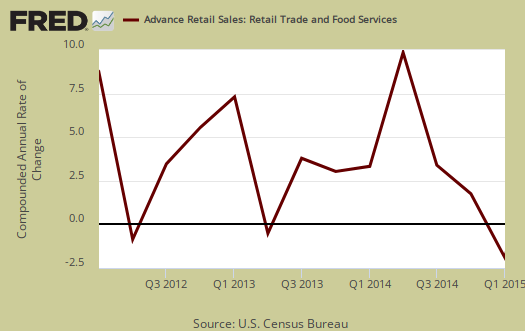
Advance reports almost always are revised the next month as more raw sales data is collected by the Census. In other words, do not get married to these figures, they will surely be revised and seasonal adjustments are aggregate.
Here are past retail sales overviews, unrevised.

gasoline sales
the 0.6% decrease in sales at gas stations looks to be in error, as gasoline prices were up 3.9% in March, so we would expect to see a significant revision in that figure when the advance report for April is released a month from now...
rjs
volume vs. prices
I think you are right but we might look at volume of sales vs. prices. How bad off is demand these days? A lot of people are now owning cars which get > 30mpg?